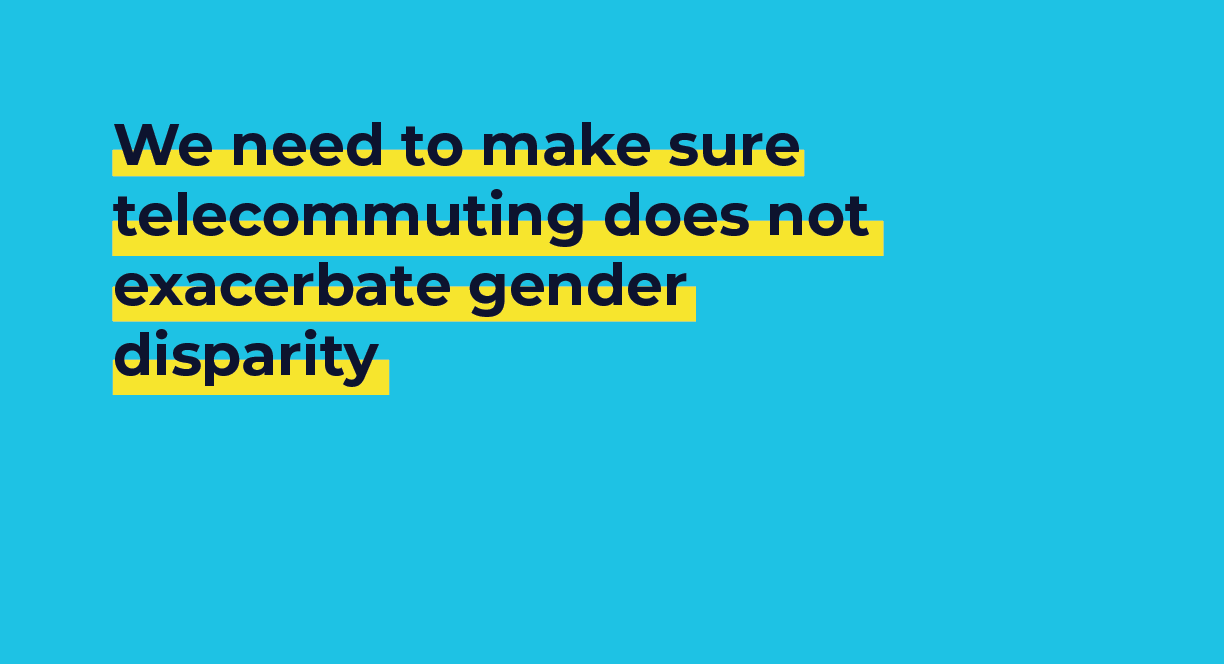We need to make sure telecommuting does not exacerbate gender disparity
Authors: Sarah Kaplan, Sonia Kang, David Fang
Global authorities such as WHO and the International Labour Organization have proposed interventions to improve the telecommuting experience, such as establishing work–life boundary strategies, designing ergonomic remote workplaces, and maintaining regular social interactions. However, the potential negative gendered consequences remain under-acknowledged. When women work from home, they report a disproportionate increase in domestic labour, childcare-related disruptions, and declines in productivity and mental health. If not addressed, teleworking might exacerbate existing gender inequities in career advancement, health, and rights, among others, especially as global telecommuting rates continue to climb throughout 2022 and beyond.
In general, women are more likely to telecommute than men, both before and after the COVID-19 pandemic, and women are more likely to report mental health issues. For example, during the COVID-19 pandemic, 62·3% of telecommuting women (vs 42·6% of telecommuting men) in the USA reported two or more new mental health issues after transitioning to remote work.These women reported more depression, loneliness, anxiety, and stress, and sharper declines in job satisfaction, engagement, efficiency, and work–life balance, when compared with men. Additionally, women reported higher rates of fatigue than men, due to extra hours spent on unpaid labour (eg, housework, childcare, and eldercare). Because telecommuters are generally paid and promoted less than office workers, the increasing gender gap in telecommuting could exacerbate existing disparities in pay and promotion that women already experience relative to men, in turn negatively affecting women’s health.




